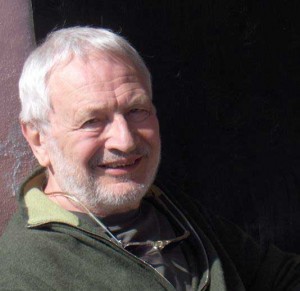 Giorgio Bert, MD is Guest Lecturer in Medical Semiotics at University of Turin (Italy). Bert took part to the movement that, since the Seventies, highlighted the centrality of a new medical education, prevention, social and environmental aspects of health, proposing a medicine more careful to the patient as person, to his/her rights and needs. Founder of SICIS (Italian Society of Systemic Counselling) and of CHANGE Institute of Systemic Counselling (Turin), is co-founder of Slow Medicine.
Giorgio Bert, MD is Guest Lecturer in Medical Semiotics at University of Turin (Italy). Bert took part to the movement that, since the Seventies, highlighted the centrality of a new medical education, prevention, social and environmental aspects of health, proposing a medicine more careful to the patient as person, to his/her rights and needs. Founder of SICIS (Italian Society of Systemic Counselling) and of CHANGE Institute of Systemic Counselling (Turin), is co-founder of Slow Medicine.
Q. How do you define Narrative Medicine today?
GB. Defining Narrative Medicine today is not simple: it has become so fashionable, so inflated… Probably the best tuning on this topic was that emerged in the 2014 Consensus Conference at the National Institute of Health (“Guidelines for employing Narrative Medicine in the clinical care field”). Narrative Medicine is – indeed – medicine, an intervention we believe to have a healing effect: it is not a mere literary work, is a therapeutic work, beyond relational. And if it can have a healing effect, we must evaluate this. The patient has the right to be fully present in the care relationship. This allows a systemic vision of the patient, inasmuch element of a broader context: familiar, social, environmental. In the classical clinical story, the anamnesis, the doctor tells the story of the patient as a function of the diagnosis. In an open narrative form, patient’s reference systems appear. The patient is present as a real person, not as sick person. But the doctor must know how to use Narrative Medicine in a systemic and not doctor-centred vision. Often the fact itself of narrating produces wellbeing: narrating helps to put order in the chaos, and in chaos we feel badly. All these aspects made Narrative Medicine a complete care tool. Narrative Medicine has born as care intervention, and for me it continues to be that.
Q. What brought you to Narrative Medicine?
GB. I had few occasions to experiment Narrative Medicine in practice, at least with that name, because I was already close to retirement when it was born. Instead, I had the occasion to indirectly experiment it, thanks to the courses I teach for young doctors about the employ of narrative. At the end of these courses, I ask these doctors which advantages they observed in the relationship with the patient using the narrative tool, and for many of them it was surely an unexpected discovery. For what I could directly see, I could find that it really facilitated the relationship with the patient – it is also true that I have been dealing with doctor-patient communication since some decades, so I was in some ways already ready to accept it. Slow Medicine represents a good observatory too. And what I see from this observatory and courses, is that a better doctor-patient communication very slowly starts to appear in medical practice, but we are far from having it: doctor-patient relationship is still left to spontaneity. But it starts to be something we need, even by professionals themselves: professionals coming from university without knowing how to relate with patients, much less how to let them narrate.
Q. Why Slow Medicine?
GB. Slow Medicine was born from the encounter of people wondering if and how could be possible to change the technological and medicalized aspect of care. Focusing on diagnosis is important, but without losing sight of social, environmental, and systemic aspect of illness: those that allow each sick to be different from the others, even if diagnosis is the same. Even more if diagnosis is missing. Generally, health is so medicalized that prevention is not identified with screening activities (which is not “prevention”, but an anticipated diagnosis) and not with interventions on environment and life style. Slow Medicine intends to move the perspective from medicalization to health promotion, that requires to work together with the patients. We started seeking to synthetically define the keywords in which we recognized ourselves, summarized then in sober, respectful, and fair medicine. Where “respectful” is the central part, because it indicated the equality between patient and doctor: the professional has medical competences, but the patient has competences on his/her own body. Medical competences are different, but do not matter more than the patient’s ones about health promotion.

Pingback: Narrative Medicine - Honoring the Stories of Illness - Slow Medicine
Pingback: Narrative Medicine – Honoring the Stories of Illness – SlowMedicine